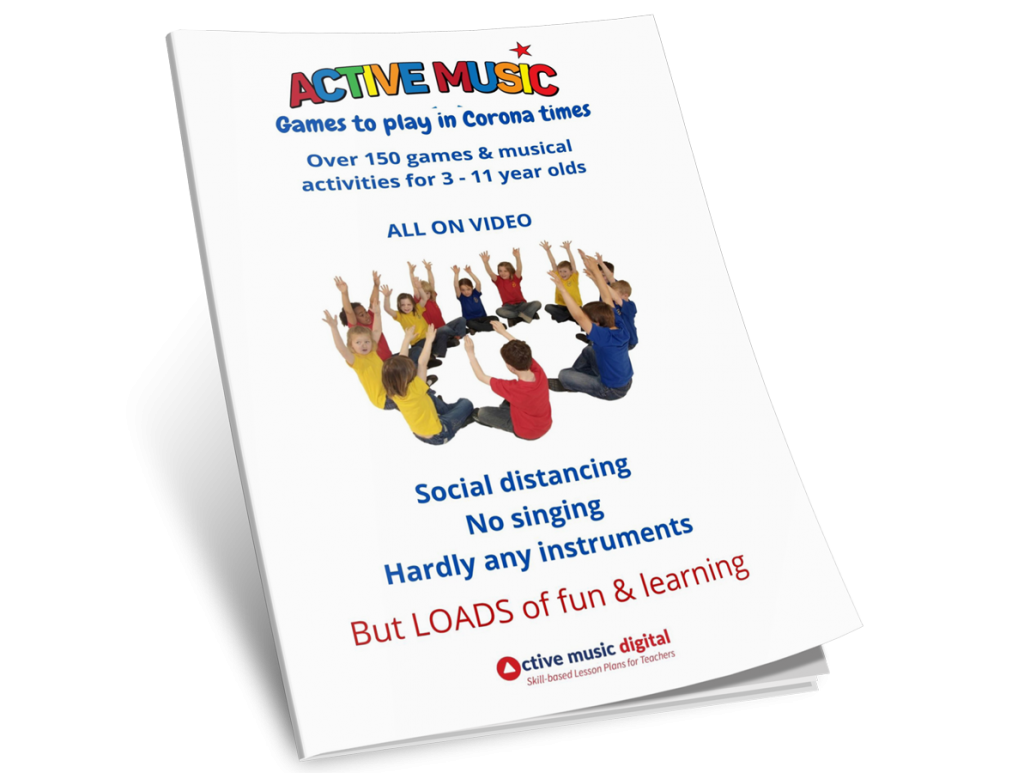
As teachers, we are used to adapting, differentiating, changing lessons around, working in different timescales, with different children and to different agendas constantly. Now we need to adapt again – to a whole series of temporary new rules. No singing, social distancing, hardly any instruments…. but in true teacher style, I have analysed and studied the games in Active Music so I can bring to you (without need for further work on your part) – all the games and activities that can be played exactly as they are and all those that need small adaptations (very simply explained). Interestingly, the adaptations are mostly about chanting instead of singing and using body percussion instead of instruments.
As Active Music games are short and repetitive, chanting works brilliantly. If you are not comfortable chanting, the good news is that the children can do all the actions while watching and listening to the children on the videos. This way they will be developing their listening whilst subconsciously learning many rhythmic skills.
I have found 77 musical games and activities from the Active Music repertoire for 3 – 7-year-olds and over 100 musical games and activities for 7 – 11-year- olds – all on video for you to clearly see.
Can you still teach amazing music despite these temporary rules? A resounding YES!
Rhythm teaching can be done with chanting instead of singing as the stimulus and even listening and watching instead of
chanting, which is why the videos are so helpful. I love teaching children the rhythmic ‘feel’ and how the pulse stays regular throughout and the rhythm keeps changing. We can teach the difference between pulse and rhythm, different rhythms and rhythm names. We can also create rhythmic ostinatos and rhythmic compositions. We can compose and perform, all without singing (and often without even chanting), without holding instruments and by keeping to social distancing rules!
When children learn rhythms, they are listening, internalising, adapting to others, following a conductor, speeding up and slowing down their speed and performing! Let’s embrace these temporary new activities and see what they can teach us and our children! It is not just a temporary fill-in. It creates musical foundations that so many musical experiences can be built on!
Let’s keep music teaching going!

